BBQ Rubs & Sauces Guide: The Flavor Secrets of Legendary BBQ
In the world of barbecue, the true magic lies not just in the meat or the smoke, but in the layers of flavor that are meticulously built into every cut. From the savory bark that forms on a brisket to the tangy glaze that coats a rack of ribs, this is where the character and regional identity of BBQ truly shine. This guide, a complete BBQ Rubs & Sauces Guide, will take you on a deep dive into the art and science of these essential flavor components.
For a beginner, the sheer variety of rubs and sauces can be overwhelming. Should you go sweet or savory? Vinegar or tomato-based? Dry or wet? This guide will demystify the process, revealing the fundamental principles and regional secrets that allow you to master the flavor of any piece of meat you put on the grill or in the smoker. Understanding the role of rubs and sauces is the key to unlocking your full potential as a pitmaster.
1. The Foundation: Understanding the Role of Rubs & Sauces
Before we get to the recipes, it’s crucial to understand the purpose of each. While they both add flavor, they do it in fundamentally different ways and at different stages of the cooking process.
- Rubs (Dry Rubs): A dry rub is a mixture of dry spices and seasonings that is applied directly to the meat before cooking. The rub adheres to the surface and, during the long cooking process, works with the smoke and rendered fat to create a thick, flavorful, and crunchy “bark.” The primary role of a rub is to enhance the meat’s natural flavor and create a textural contrast.
- Sauces (Wet Sauces): A BBQ sauce is a liquid condiment that is typically applied at the end of the cook. Sauces are used to add moisture, create a shiny glaze, and deliver a final, bold flavor hit. They can be tangy, sweet, spicy, or a combination of all three, and they are what gives many regional BBQ styles their defining character.
Think of it this way: a rub is the foundation of flavor, while a sauce is the finishing touch.
2. The Rubs: The Building Blocks of Flavor
A great rub is a balance of salt, sugar, and spices. Mastering this balance is the first step to becoming a true BBQ artist.
The Basic Components
Every rub, regardless of its style, is built on a few core ingredients.
- Salt: The most important ingredient. Salt is a flavor enhancer that makes the meat taste more like itself. It also draws moisture out and then back into the meat through osmosis, helping to keep it juicy. Use coarse kosher or sea salt for better adhesion and a clean flavor.
- Sugar: Sugar is essential for caramelization. During the low-and-slow cooking process, it melts and combines with the spices and rendered fat to create the beautiful, dark “bark.” Brown sugar is the most common choice, as its molasses content adds moisture and a rich, deep flavor.
- Spices: This is where you get to be creative. The most common spices are paprika (for color and flavor), black pepper (for a kick), garlic powder, and onion powder. For heat, you can add cayenne pepper or chili powder. Other great additions include cumin, mustard powder, or coriander.
Regional Rubs
American BBQ is defined by its regional styles, and the rubs are no exception.
- Texas-Style (The Dalmatian Rub): In Texas, the flavor is all about the beef and the smoke. The classic rub is incredibly simple: equal parts coarse black pepper and kosher salt. This minimalist approach allows the meat’s natural flavor to be the star.
- Kansas City-Style: Known for its sauce, Kansas City’s rub is sweet and savory. It typically contains a higher ratio of brown sugar and paprika, which helps create a beautiful, reddish-brown bark.
- Memphis-Style: In Memphis, it’s all about the dry rub. This rub is known for being savory and spicy, with a heavy emphasis on paprika, garlic powder, onion powder, and cayenne. The goal is to get all the flavor from the rub, with sauce being a secondary, optional topping.
Internal Link: If you want to put this knowledge into practice, try our guide on Memphis Dry Rub Ribs.
Building Your Own Rub
A great way to start is with a master formula, and then adjust it based on your personal taste and the meat you’re cooking. A good starting ratio is:
- 8 parts salt
- 4 parts brown sugar
- 2 parts paprika
- 1 part black pepper
- 1 part garlic powder
From there, you can customize:
- For Beef: Increase the black pepper for a bolder flavor that stands up to the rich taste of beef. A touch of chili powder can also work well.
- For Pork: A sweeter rub with more brown sugar and paprika is a classic choice for pulled pork or ribs.
- For Chicken: A rub with more paprika, garlic, and a hint of onion is great, as it gives the chicken a beautiful color and savory flavor.
3. The Sauces: The Final Glaze
Sauce is what many people think of when they hear “BBQ.” It adds a finishing touch of flavor, moisture, and shine. Like rubs, sauces are deeply rooted in regional traditions.
Regional Sauce Breakdown
The world of BBQ sauce is a testament to regional creativity, with each style defined by its unique base.
- Kansas City (Tomato-Based): The most common BBQ sauce in America. It’s thick, sweet, tangy, and smoky. It’s a versatile sauce that can be used on all types of meat. Its core ingredients are ketchup or tomato paste, molasses or brown sugar, and vinegar for tang.
- Carolina (Vinegar-Based): A thin, tangy sauce that cuts through the richness of pulled pork. It’s divided into two main styles:
- Eastern North Carolina: A very thin, simple sauce made of vinegar, black pepper, and crushed red pepper flakes. It’s meant to add moisture and a clean, sharp flavor that complements the whole-hog BBQ tradition.
- Lexington/Western North Carolina: Adds a little ketchup and brown sugar to the vinegar base, giving it a bit more body and a touch of sweetness.
- South Carolina (Mustard-Based): Known as “Carolina Gold,” this sauce is a signature of the South Carolina barbecue scene. Its base is yellow mustard, and it’s mixed with vinegar, sugar, and spices. It’s tangy, sweet, and pairs perfectly with pork.
- Alabama (Mayonnaise-Based): The “White Sauce” from northern Alabama is unlike any other. It has a mayonnaise base mixed with vinegar, black pepper, and other seasonings. It’s often used on smoked chicken to add moisture and a unique, tangy flavor.
Internal Link: To understand how these sauces are used in their native regions, read our American BBQ Styles guide.
Building Your Own Sauce
Start with a base and then build your desired flavor profile. A great all-purpose sauce starts with a ratio of 3 parts ketchup, 1 part vinegar, and 1 part sweetener (brown sugar or molasses). From there, you can add spices like paprika, garlic powder, onion powder, and a touch of cayenne for heat. You can also add more complex flavors like liquid smoke, Worcestershire sauce, or a pinch of dry mustard.
4. Pairing Rubs and Sauces
The best BBQ is not just about having a great rub or a great sauce—it’s about knowing how to pair them to bring out the best in the meat.
- Beef: For a beef brisket or steak, go with a savory rub that has a high ratio of pepper. A simple salt and pepper rub is classic. If you use a sauce, serve it on the side so as not to overpower the rich, smoky flavor of the beef.
- Pork: Pork is incredibly versatile. For pulled pork or ribs, a rub with a good balance of sugar and spices is excellent. You can finish it with a sweet Kansas City-style sauce, a tangy Carolina vinegar sauce, or a spicy South Carolina mustard sauce, depending on the flavor you want to achieve.
- Chicken: Chicken and poultry work best with lighter rubs that won’t overpower the delicate flavor. Rubs with paprika, garlic, and herbs work well. For a sauce, you can’t go wrong with Alabama’s white sauce or a classic tomato-based sauce.
Internal Link: Your new rubs and sauces will be perfect for our guide on The Only 4 Knives You Need for Meat Prep to handle all your cuts.
5. Advanced Techniques & Tips
A few pro tips can elevate your BBQ to the next level.
- Applying the Rub: The key is to pat, not rub. Sprinkle the rub generously over the meat and gently pat it down to ensure it adheres to the surface. Don’t press too hard, as this can create a paste and prevent the bark from forming.
- When to Sauce: Never put a sugar-based sauce on your meat at the beginning of the cook. The sugar will burn and create a bitter, acrid crust. The best time to sauce is in the last 15-30 minutes of the cook. This gives the sauce time to thicken and caramelize without burning.
- Mopping and Basting: A “mop” is a thin, watery sauce (often vinegar or stock-based) that is applied during the cook. Mops are used to add flavor and moisture to the meat and prevent it from drying out. They are typically applied every 30-60 minutes.
- The Science of Flavor: To understand why these techniques work, it’s helpful to understand the science behind them. The Maillard reaction, for example, is the chemical reaction between amino acids and reducing sugars that gives browned food its distinctive flavor. Understanding this process can help you create a better crust. For a deeper dive into the science of cooking, AmazingRibs.com is an excellent resource.
Conclusion
The art of barbecue is a journey of continuous learning and experimentation. While a quality cut of meat and a good smoker are essential, it is the careful application of rubs and sauces that truly defines the final product. A rub provides a deep, smoky foundation, while a sauce adds a bold, finishing touch. By understanding the basics and exploring the classic regional styles, you can master your own unique flavor profile. Now, armed with this comprehensive BBQ Rubs & Sauces Guide, go forth and create your own legendary BBQ.
FAQs:
What’s the difference between a rub and a sauce? A rub is a dry spice mixture applied before cooking to create a bark. A sauce is a liquid condiment applied at the end for flavor and glaze.
Why can’t I put a sugar-based sauce on the meat at the beginning? The sugar will burn and create a bitter, acrid taste due to the high heat of the smoker or grill.
What are the basic ingredients of a rub? The foundational ingredients are salt, sugar, and various spices like paprika and black pepper.
What are the main regional BBQ sauce styles? The main styles are tomato-based (Kansas City), vinegar-based (Carolina), mustard-based (South Carolina), and mayonnaise-based (Alabama).
What is a “mop” in BBQ? A mop is a thin, watery liquid (often vinegar or broth-based) used to baste the meat during a long cook to add moisture and flavor.
Further Reading:
-
Best BBQ Grills for Beginners – Our selection of the perfect starter grills
-
10 Common BBQ Mistakes (And How to Fix Them) – Avoid these beginner pitfalls
-
Essential BBQ Tools You Need – The must-have equipment for every griller
You Might Also Like:
-
Budget BBQ: The Best Affordable Cuts of Meat – Great meats that won’t break the bank
-
Quick BBQ: How to Grill Amazing Meals in Under 30 Minutes – Fast, delicious recipes for busy beginners
-
BBQ Techniques Explained – Master the fundamental cooking methods
External Cooking Guides & Resources
- AmazingRibs.com: A leading resource for BBQ and grilling, offering science-based techniques, myth-busting articles, and a massive database of recipes.
- The Spruce Eats: A comprehensive guide to America’s regional BBQ styles, detailing the history and unique characteristics of each.
- Atlas Obscura: Global Grilling Traditions: An exploration of unique and lesser-known grilling traditions from around the world.
- Weber’s Grilling Guide: Official guides from a well-known grill manufacturer, offering tips on grilling, smoking, and using different types of fuel.

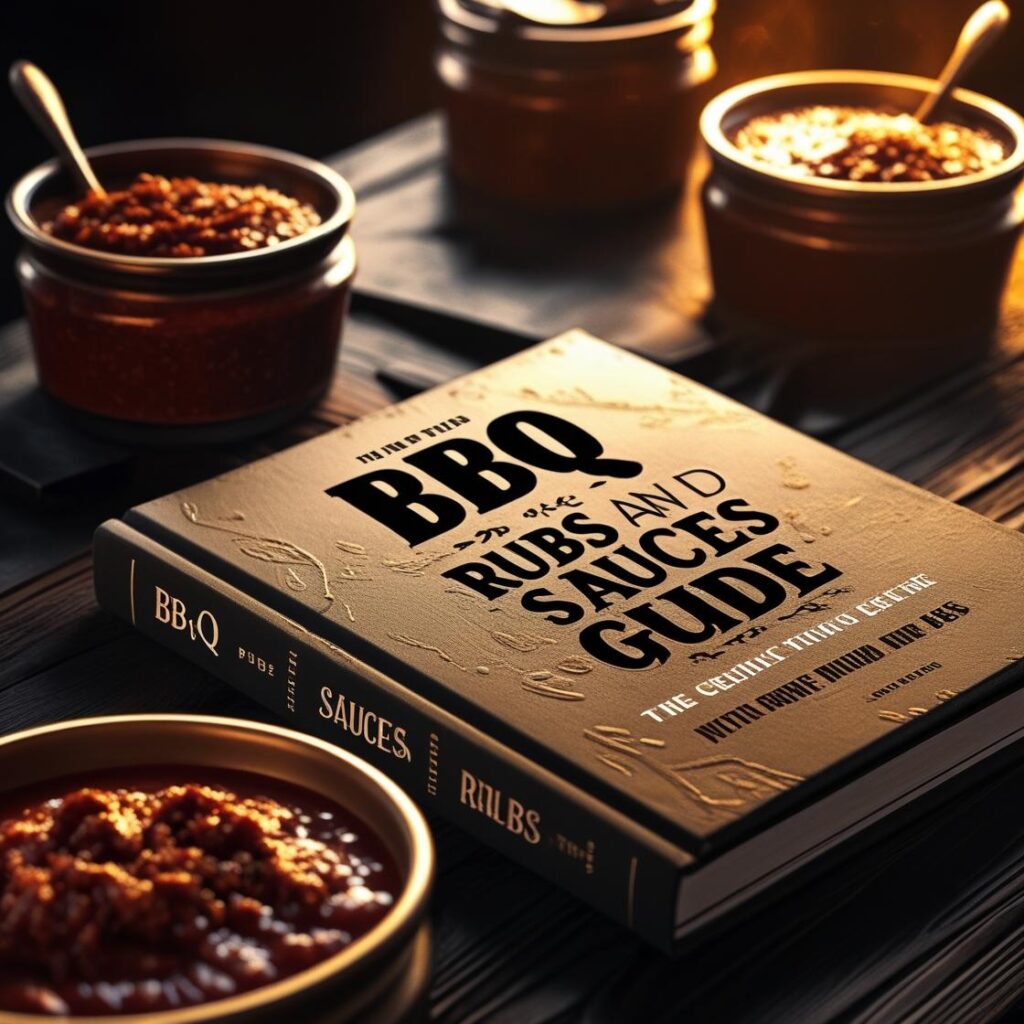

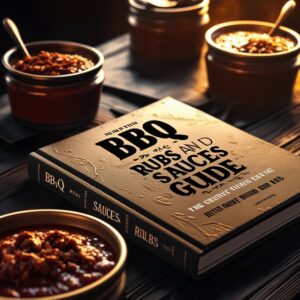
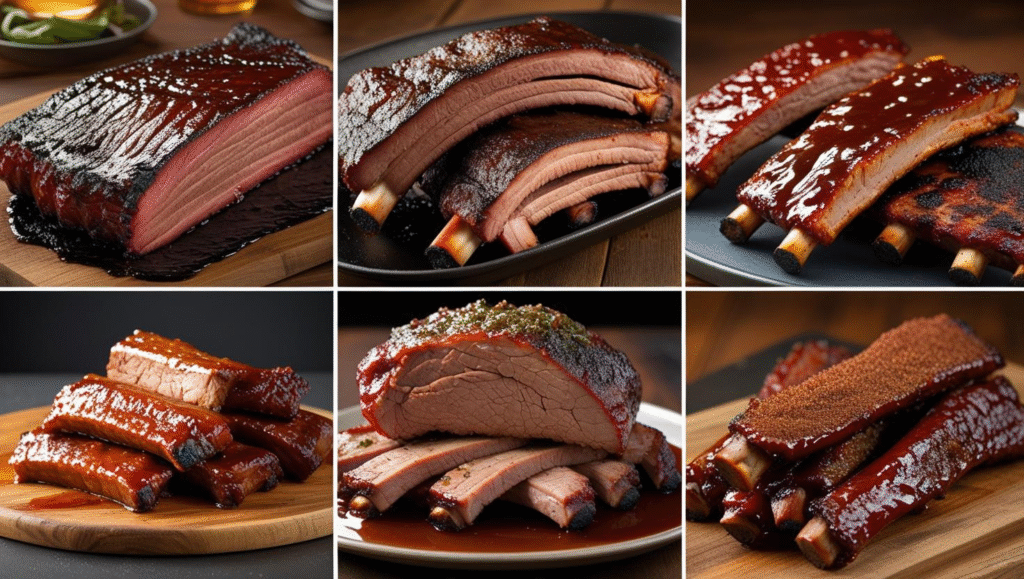

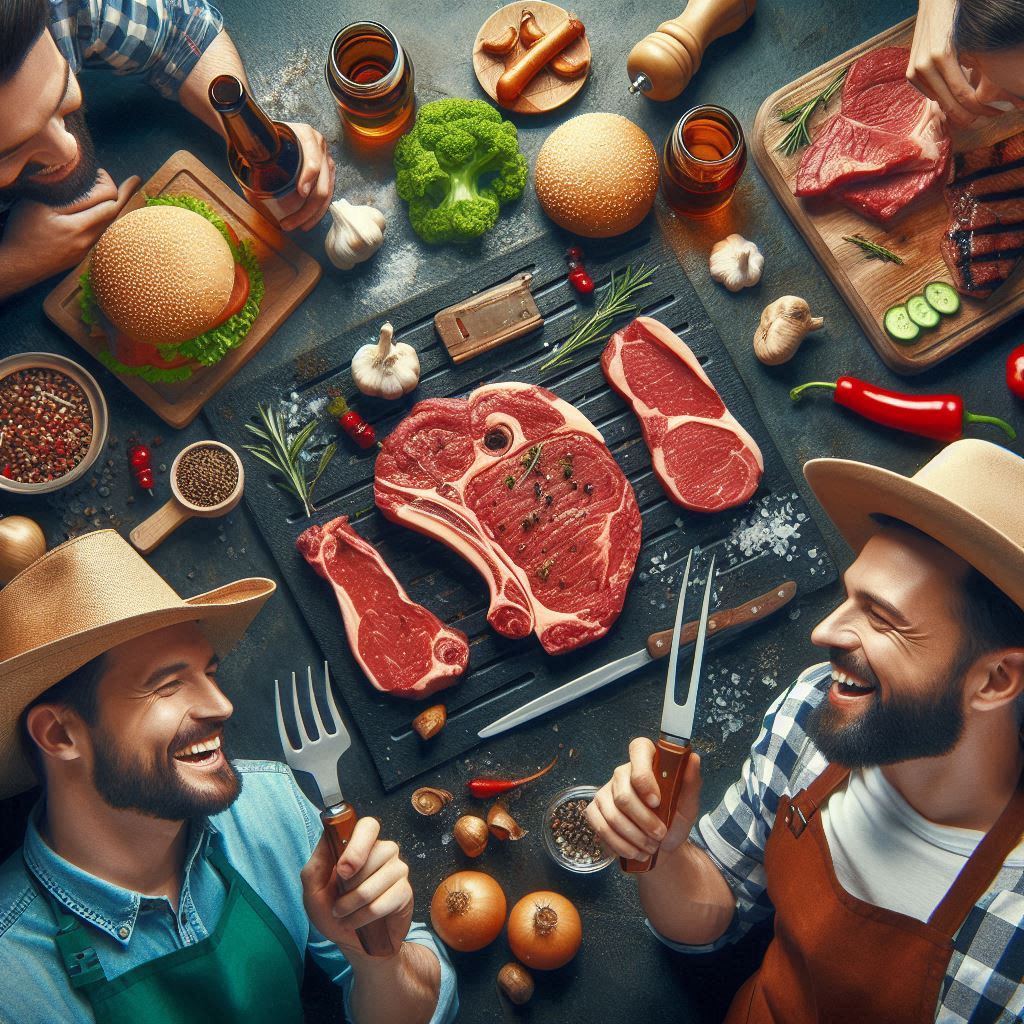
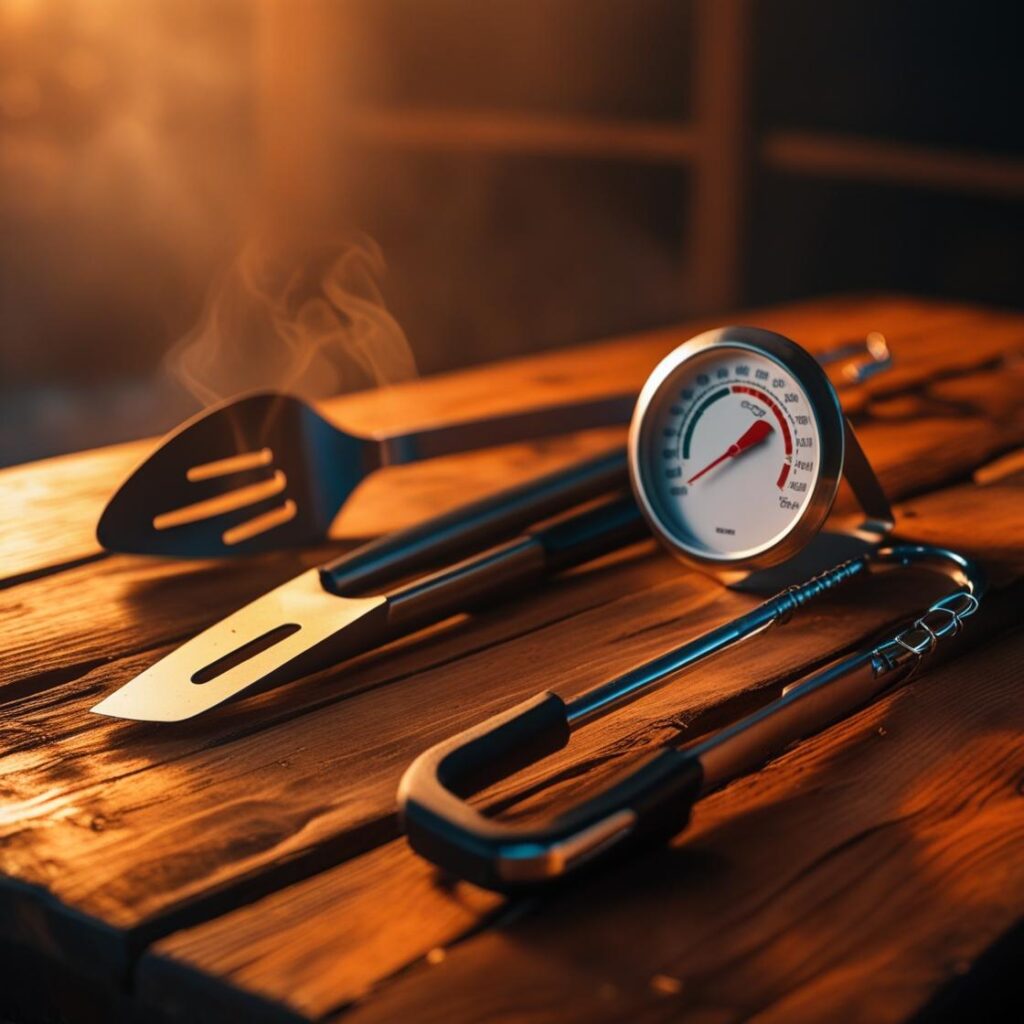
Pingback: BBQ: More Than a Meal: Your Guide to Grilling & Smoking [2025]
Pingback: Best Pork Cuts for BBQ: Ultimate Grilling & Smoking Guide [2025]
Pingback: Regional BBQ Styles in the USA — Texas, Kansas City, Memphis & Carolina | Good Ultimate Guide [2025]
Pingback: How to Season Meat: Rubs, Marinades, and Brines Explained - The Meat Master USA
Pingback: Healthy Grilling: How to Enjoy BBQ Without Guilt - The Meat Master USA
Pingback: Pulled Pork Perfection: Ultimate Low and Slow Cooking Guide (2025)
Pingback: Juicy Grilled Chicken Thighs Recipe: Your New Go-To for the Grill - The Meat Master USA [2025]
Pingback: Turkey Smoking 2026: The Complete Guide to Juicy Holiday BBQ - The Meat Master USA
Pingback: Steak Seasoning 2026: The Ultimate Guide to Rubs, Salts, and Marinades - The Meat Master USA
Pingback: Brisket 2026: The Ultimate Guide to Trimming, Smoking, and Slicing - The Meat Master USA
Pingback: BBQ Sauces That Make a Difference: Your Guide to Flavor Perfection